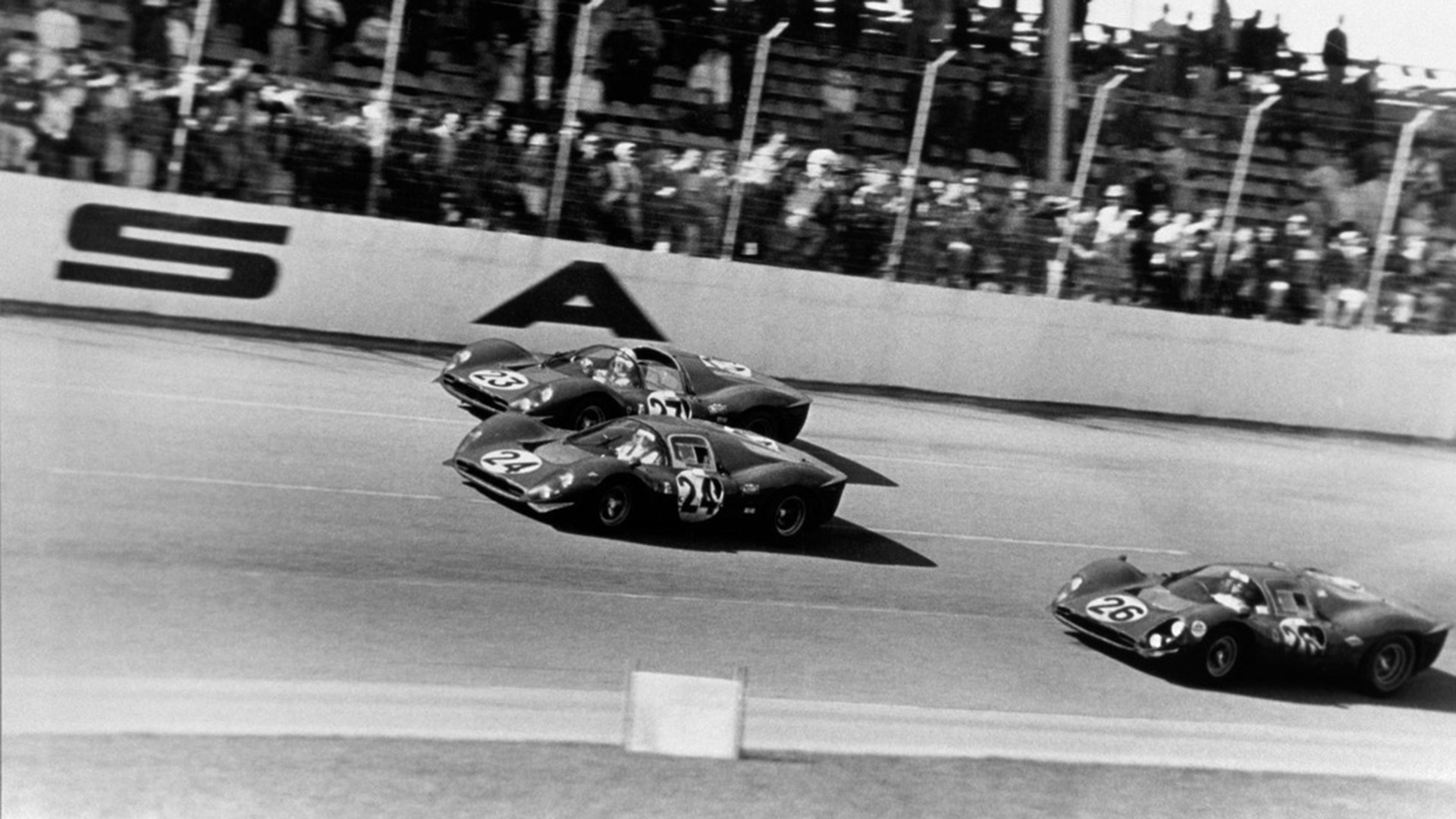








TRIBUTE TO THE TRIUMPH
365 GTB4 DAYTONA PRESENTED





TRIBUTE TO THE TRIUMPH
On the occasion of the 1968 Paris Motor Show, Ferrari presented another of its masterpieces, one of the most popular among enthusiasts and collectors. A true star, an icon, a myth: the Daytona, the unofficial name given to the car by the press to celebrate Ferrari’s historic hat-trick at the 24 Hours of Daytona the year before.

The model’s real name was the 365 GTB4, and it was the last Ferrari to be built before 50% of the company passed into the hands of Fiat. Similarly, it was the last model produced according to Enzo Ferrari’s technical credo: engine in front of the cockpit, just as the horse goes before the cart … The 365GTB4 was built according to the classic front-engine, rear-wheel-drive layout, with optimal weight distribution thanks to the transaxle solution with the gearbox in the rear.
The Daytona was the car that replaced the 275 GTB4, a popular, fast model, which was starting to feel a little dated, inspiring a desire for fresh lines. Pininfarina had been aware of this for some time, and thanks to Leonardo Fioravanti’s skilful pencil, there were already drawings ready. The new car was wedge shaped and very slender, with great attention paid to aerodynamics, and a truncated tail. Sergio Pininfarina liked the design, and later altered the final shape of the car, streamlining the nose even further, which initially had a large Plexiglas strip that integrated the headlights. This feature would be eliminated in 1971, with the adoption of retractable headlights. Ferrari approved the project, and in 1967, began the construction of the first prototype. In 1968, the car was ready for the limelight. From a technical perspective, the engineering team in Maranello maintained the classic chassis construction with a tubular spaceframe with oval-section tubes. The front and rear track were wider to accommodate the additional performance available from the 320-hp 4.4-litre dual overhead camshaft V12. The 365 refers to the displacement per cylinder, the 4 to the camshafts, while B stands for berlinetta: this is the origin of the name 365 GTB4. At the time, the Paris Motor Show was considered to be the leading event of its kind, the most important of all, perhaps due to the charm of the City of Light, but the fact remains that all the exciting new models made their catwalk debut there. The Daytona could reach speeds of more than 280 km/h, with outstanding acceleration, and was relatively easy to drive, keeping in mind that it was still a GT. It was the most high-performance car of the period. Like any self-respecting Ferrari, it proved fast on the track too, and won its category at the 24 Hours of Le Mans in 1972, ’73, and ’74, and took second place at Daytona in 1979: an amazing testament to the longevity of the design, especially given that in the meantime production of the car had ceased. As usual, Luigi Chinetti requested a spider version for the American market, and for California in particular. The 365 GTS4 was presented at the Frankfurt Motor Show in 1969.
